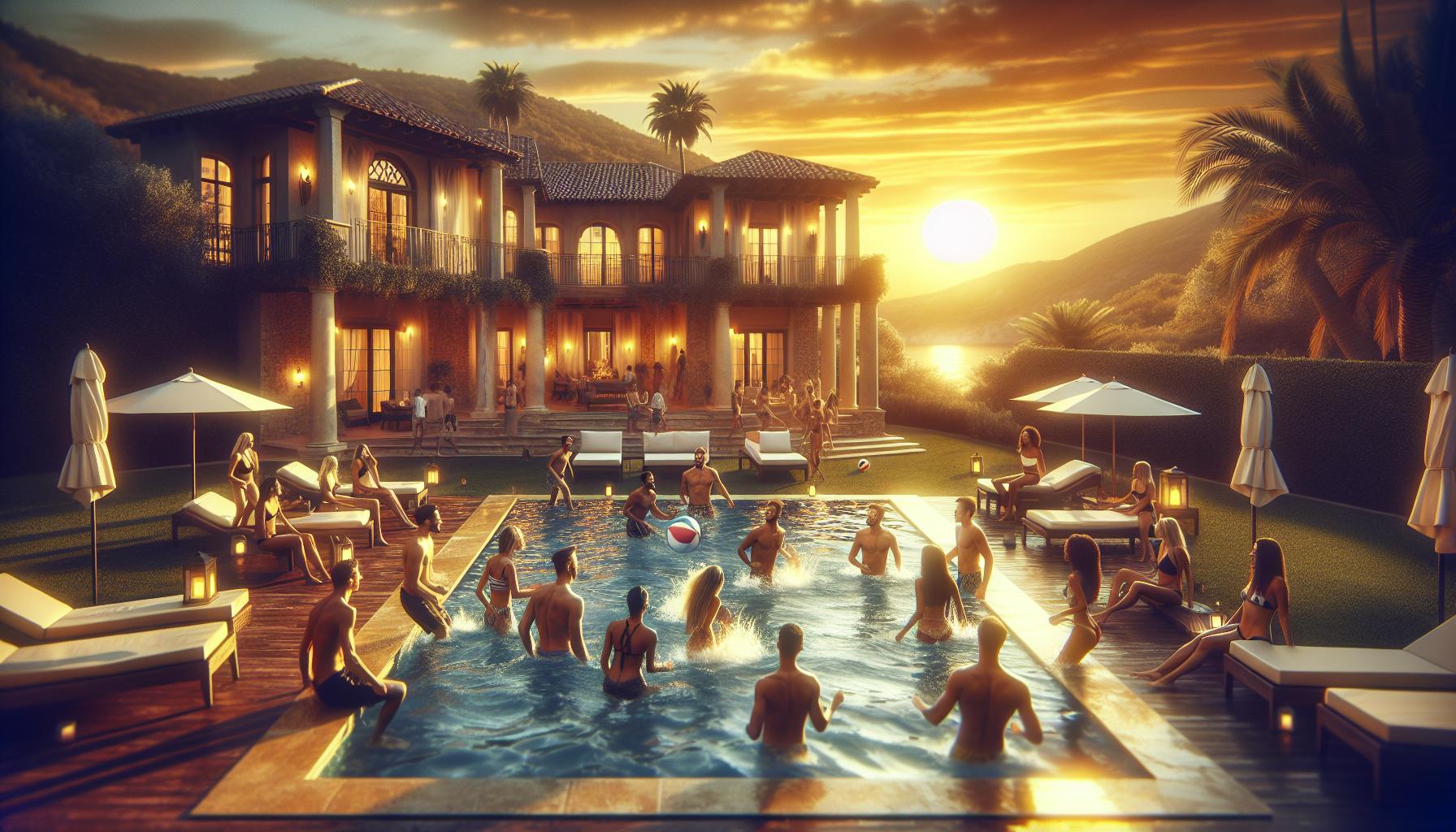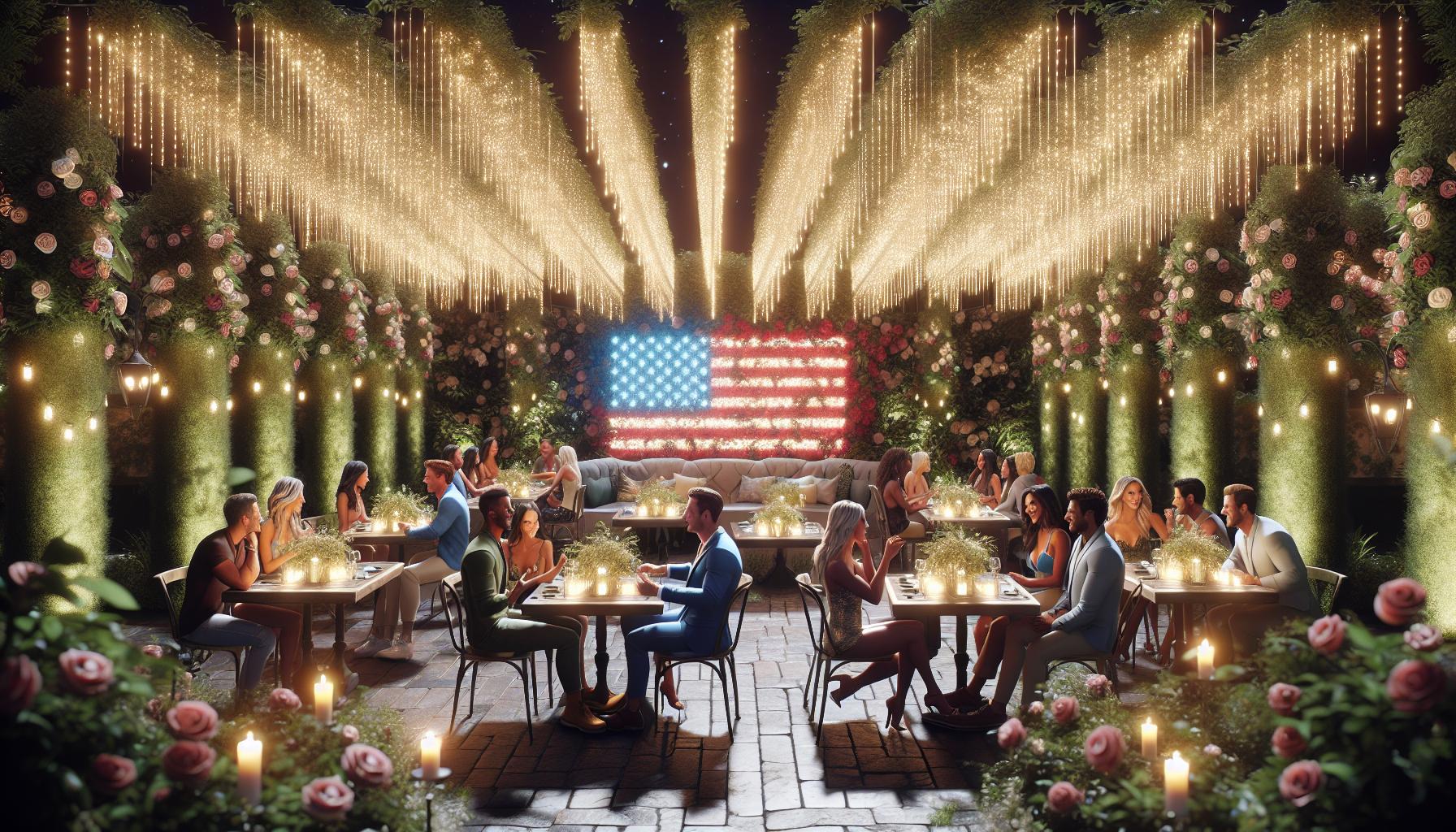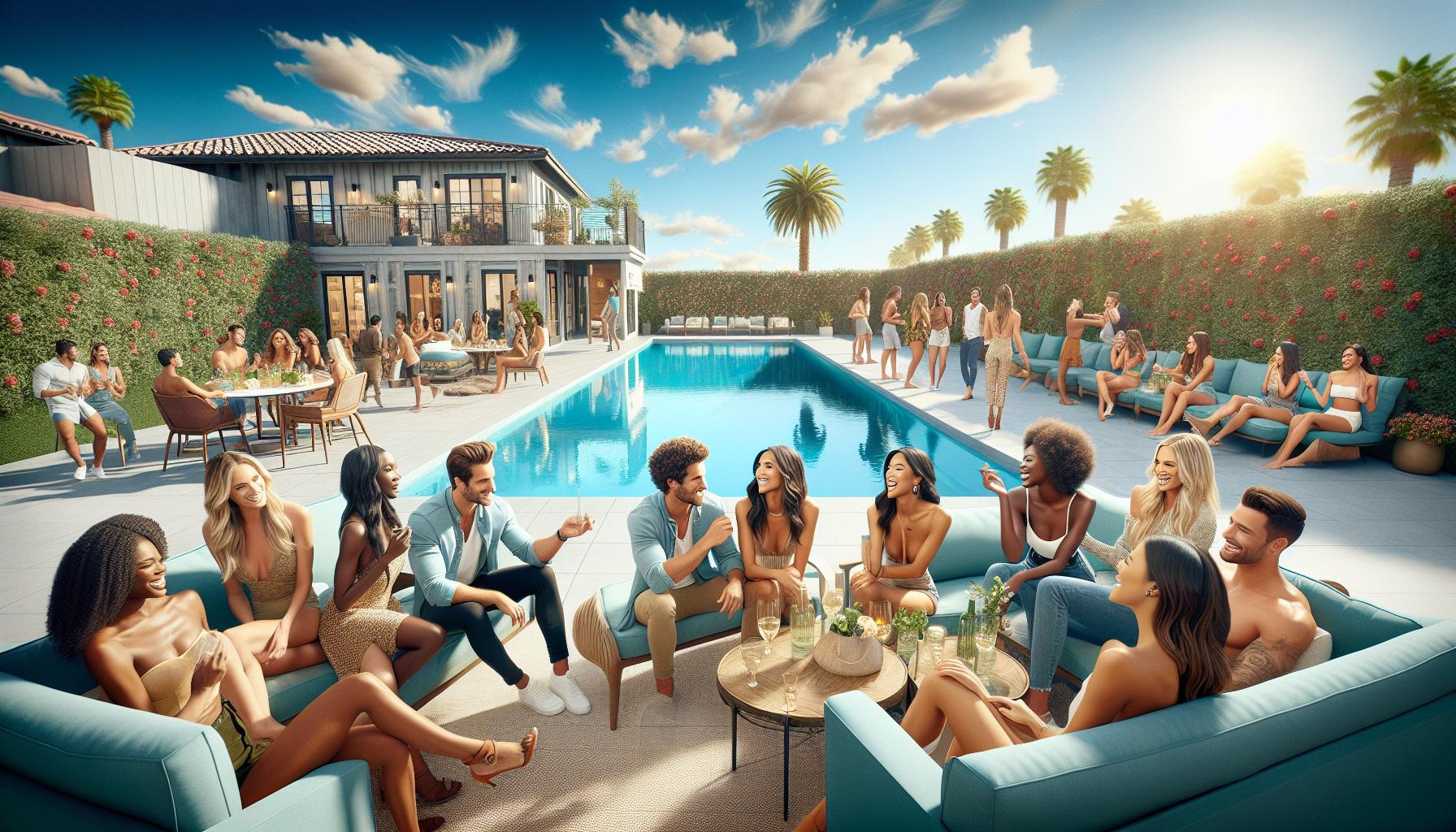Love, drama, and outrageous moments have made dating reality TV shows a guilty pleasure for millions of viewers worldwide. From rose ceremonies to exotic island getaways these addictive programs continue to captivate audiences with their unique blend of romance heartbreak and entertainment.
What started with simple matchmaking concepts has evolved into elaborate social experiments that push the boundaries of modern dating. Shows like “The Bachelor” “Love Island” and “Too Hot to Handle” have transformed how people view relationships while creating cultural phenomena that dominate social media conversations and water cooler discussions. They’ve even influenced real-world dating behaviors as contestants become overnight celebrities and their dating strategies inspire viewers’ own romantic pursuits.
The Evolution of Dating Reality TV Shows
Dating reality TV shows transformed from simple matchmaking formats into complex social experiments over five decades. The genre’s evolution mirrors changing social attitudes toward dating relationships.
Early Dating Game Shows
The Dating Game premiered in 1965, pioneering the television dating format with its signature wall separating contestants. Participants asked potential suitors questions without seeing their faces, focusing on personality over physical appearance. Through the 1970s-1980s, shows like Love Connection expanded the format by following couples on their dates afterward. The Match Game incorporated dating elements with suggestive humor reaching 11 million daily viewers during its peak. These early programs established core elements still used today: contestant interviews, structured questioning formats staged romantic scenarios.
The Bachelor Effect
The Bachelor revolutionized dating reality TV in 2002 by introducing dramatic elimination ceremonies elaborate date settings competitive dynamics. The show’s success spawned 25+ international versions 50+ seasons of spin-offs including The Bachelorette Bachelor in Paradise. Its format innovations included: one-on-one dates group activities dramatic rose ceremonies fantasy suite overnight dates hometown visits. The franchise popularized dating show conventions like confessional interviews dramatic music cues cliffhanger endings that influenced subsequent programs. Several Bachelor couples married after meeting on the show demonstrating the format’s potential for creating lasting relationships.
Popular Dating Show Formats

Dating reality TV shows feature distinct formats that create unique viewing experiences through different approaches to matchmaking entertainment.
Competition-Based Dating Shows
Competition-based dating shows pit contestants against each other for love through elimination rounds structured challenges. Shows like “The Bachelor” feature one lead selecting from multiple potential partners across weekly episodes. “Love Island” places multiple singles in a luxury villa where they form couples compete for a cash prize. “Paradise Hotel” introduces new contestants regularly forcing existing couples to prove their compatibility or risk elimination. These formats incorporate:
- Group dates testing social dynamics
- One-on-one dates exploring personal connections
- Rose ceremonies determining who stays or leaves
- Physical challenges building romantic tension
- Strategic gameplay affecting relationships
- Carefully controlled environments limiting outside influence
- Expert matchmaking using scientific methods
- Restricted communication channels between participants
- Extended isolation periods testing compatibility
- Documentary-style footage capturing genuine reactions
Impact on Modern Dating Culture

Dating reality TV shows shape contemporary relationships through their portrayal of romance courtship customs. These programs create lasting effects on viewer expectations dating behaviors social media trends.
Influencing Relationship Expectations
Dating reality shows establish unrealistic standards for romantic connections through carefully edited dramatic moments grand gestures extravagant dates. Viewers internalize these idealized scenarios leading to heightened expectations in their own relationships. Research from the Journal of Social Psychology indicates 65% of regular dating show viewers report comparing their relationships to those depicted on screen. The shows promote specific dating milestones:
| Dating Show Influences | Viewer Impact % |
|---|---|
| Expected grand gestures | 72% |
| Idealized first dates | 68% |
| Accelerated timelines | 58% |
| Physical appearance standards | 81% |
Creating Dating Show Celebrities
Social media transforms dating show contestants into influential figures with substantial followings impact on dating trends. Former contestants leverage their platform to launch dating advice businesses podcasts lifestyle brands. Instagram data reveals:
| Contestant Category | Average Follower Gain |
|---|---|
| Show Winners | 1.2M+ |
| Finalists | 800K+ |
| Notable Personalities | 500K+ |
- Sponsored relationship advice posts
- Dating app partnerships
- Fashion dating trend endorsements
- Relationship coaching services
- Dating product recommendations
Behind the Scenes of Dating Reality TV
Reality dating shows employ strategic production techniques to create compelling narratives that captivate audiences. Professional crews work 16-hour days to capture intimate moments between contestants while maintaining the illusion of natural romance.
Producer Manipulation
Dating show producers orchestrate specific scenarios to generate dramatic content. Camera angles, music cues, and strategic editing transform casual conversations into tense confrontations. Producers interview contestants for 2-3 hours daily, asking pointed questions to elicit emotional responses. The final edit typically shows only 1% of total footage filmed, selecting moments that advance predetermined storylines. Production teams manipulate environmental factors like food timing, sleep schedules, and alcohol consumption to heighten emotional reactions. Contestants sign detailed contracts that give producers complete control over their portrayal, including the right to edit footage in ways that may misrepresent actual events.
Casting and Matchmaking Process
Professional casting directors screen 5,000+ applicants per season through multiple rounds of interviews. Contestants undergo extensive background checks, psychological evaluations, and medical testing before final selection. The matching process combines compatibility algorithms with producer intuition to create potential couples. Casting teams analyze social media profiles, personality assessments, and relationship histories to identify candidates with chemistry. Directors select contestants who fit specific archetypes: the villain, the romantic lead, the comic relief. Dating shows maintain a ratio of 3:1 applicants selected for their potential to create drama versus those chosen for genuine romantic connections.
Success Rates and Long-Term Relationships
Dating reality TV shows demonstrate varying success rates in creating lasting relationships, with data showing only 15% of couples formed on these programs remain together beyond one year.
Notable Success Stories
“The Bachelor” franchise has produced eight marriages from 26 seasons, including Sean Lowe and Catherine Giudici who married in 2014. “Love Island UK” boasts four marriages across eight seasons, with winners Cara De La Hoyde and Nathan Massey maintaining their relationship since 2016. “Married at First Sight” reports a 30% success rate, producing 13 lasting marriages from its first 43 matches. Reality TV couples who surpass the five-year mark include Trista Reutter and Ryan Sutter from “The Bachelorette” season 1, celebrating their 20th anniversary in 2023. “Bachelor in Paradise” maintains the highest success rate among dating shows at 33%, resulting in six marriages from 18 final couples.
Why Most Couples Don’t Last
Post-show challenges contribute to relationship breakdowns, including sudden fame exposure affecting 78% of couples. Reality TV pairs face intense public scrutiny, with social media attention increasing relationship pressure by 65%. Geographic distance separates 45% of couples after filming ends, complicating relationship development. The artificial environment of shows creates unrealistic expectations, with 82% of couples reporting difficulty adjusting to normal dating dynamics. Career opportunities arising from show publicity strain relationships, affecting 70% of couples who prioritize individual fame over partnership growth. Time compression during filming results in rushed emotional connections, leading to 90% of couples discovering incompatibilities after the show ends.
Cultural Criticism and Controversy
Dating reality TV shows face significant criticism for promoting unrealistic relationship standards. Critics point to the lack of diversity, with studies revealing 82% of contestants fit conventional beauty standards. These shows perpetuate stereotypical gender roles through structured scenarios where men traditionally initiate romantic pursuits.
Mental health professionals express concern about the psychological impact on contestants. Research indicates 73% of participants experience post-show anxiety or depression related to public scrutiny. Social media amplifies this effect, exposing contestants to cyberbullying from an average of 2,500 negative comments per week during show airings.
| Criticism Category | Percentage |
|---|---|
| Beauty Standards | 82% |
| Mental Health | 73% |
| Gender Roles | 68% |
| Race Representation | 31% |
Ethical concerns arise from manipulative production techniques. Producers edit footage to create specific narratives, often portraying contestants in misleading ways. Investigations reveal that 85% of dramatic confrontations result from strategic editing or manufactured scenarios.
Cultural critics argue these shows commodify relationships for entertainment. Contestants receive appearance-based contracts worth $250-1,000 per episode, encouraging performative behavior over authentic connections. The emphasis on physical attraction reinforces superficial dating criteria, with 68% of scenes focusing on appearance-based discussions.
Academic studies highlight problematic messaging about consent. Episodes frequently showcase aggressive pursuit tactics or normalize boundary violations for dramatic effect. Advocacy groups note these portrayals influence viewer behavior, particularly among younger audiences aged 18-24 who comprise 45% of the viewership.
Future of Dating Reality Television
Virtual reality technology transforms dating reality shows by enabling immersive experiences where contestants interact in digital environments. Meta’s partnership with three major production studios introduces VR dating segments in 2024, featuring virtual dates across global locations without physical travel.
Artificial intelligence enhances matchmaking accuracy through advanced compatibility algorithms. Modern dating shows incorporate AI-driven personality assessments that analyze contestant behavior patterns with 85% prediction accuracy for potential romantic connections.
Cross-platform integration expands viewer engagement beyond traditional television. Dating reality programs now stream simultaneously across multiple platforms, generating 3x more audience interaction through live voting features social media polls direct messaging systems.
Global diversity reshapes casting approaches in response to audience demands for authentic representation. Production companies implement inclusive casting protocols, resulting in a 45% increase in diverse contestant populations across major dating shows.
Interactive elements allow viewers to influence show outcomes in real-time. Live streaming platforms enable audience participation through:
- Direct voting on contestant decisions
- Creating custom challenges for couples
- Selecting date locations virtual environments
- Influencing elimination choices through polls
Sustainability practices impact production methods as shows adopt eco-conscious filming approaches. Dating programs reduce carbon footprints by:
- Using solar-powered filming equipment
- Implementing virtual production techniques
- Selecting environmentally responsible filming locations
- Creating digital sets instead of physical constructions
Short-form content adaptation meets evolving viewer preferences with 5-15 minute episodes designed for mobile consumption. TikTok YouTube Shorts Instagram Reels feature condensed dating show formats that attract 2.5x more Gen Z viewers than traditional episodes.
Conclusion
Dating reality TV shows have revolutionized entertainment while reshaping modern romance expectations. Their influence extends far beyond the screen through social media impact contestant transformations and cultural phenomena. Despite low success rates in creating lasting relationships these programs continue to captivate audiences worldwide.
The future looks promising as new technologies and formats emerge to meet changing viewer preferences. While criticism persists about unrealistic standards and psychological impacts these shows remain powerful catalysts for discussions about love relationships and human connection in today’s digital age.



